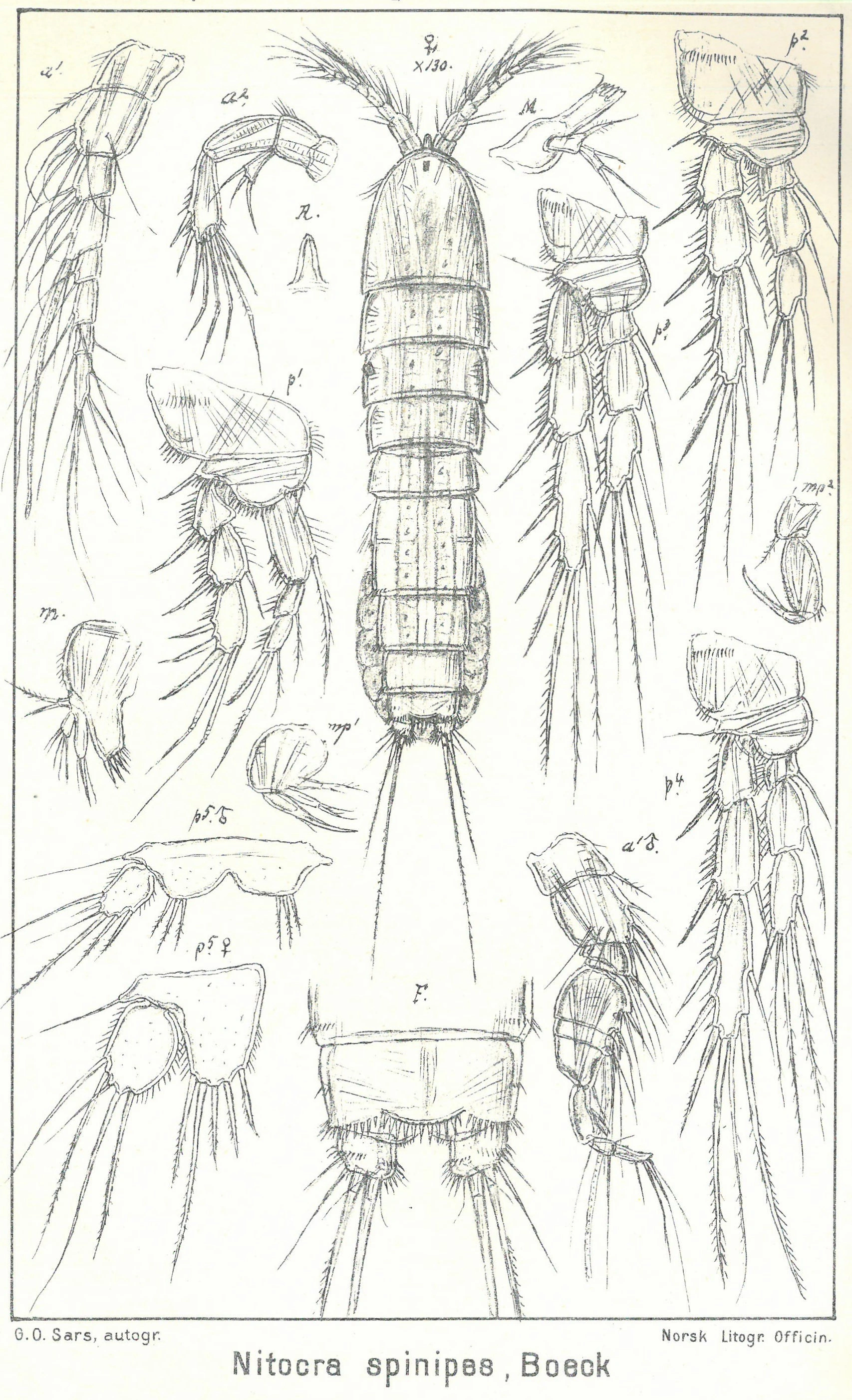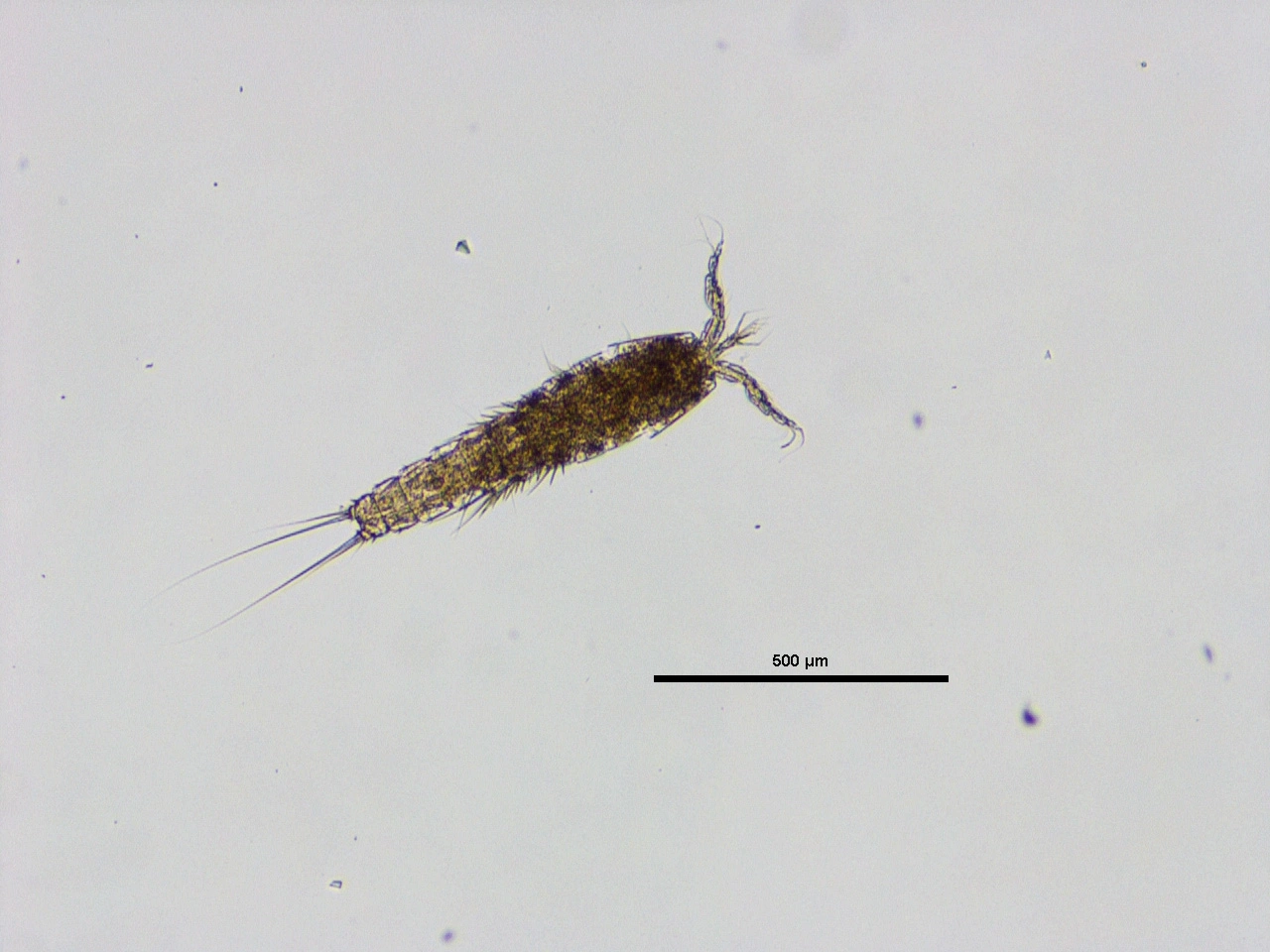Nitokra spinipes
There are few records of Nitokra spinipes from Norway. It is found in both lakes and puddles, often impacted by salty water.
Key characteristics
Nitokra spinipes is a long and slender harpacticoid. Both the exopod and the endopod in the first four legs have three segments. The endopod in the first leg is longer than the exopod, while it is shorter in the legs 2–4. Its rostrum is small, narrow and pointed. The operculum has about 14 spines. The anal somite is very spinulose. The caudal ramus is wider than long and there are a group of spines both on the inner and outer side, as well as on the dorsal surface. The antennule consists of eight segments.
Female: Length 0.66–0.80 mm
Male: Length 0.66–0.80 mm
Ecology and distribution
There are few records of Nitokra spinipes from Norway. Sars (1911) and Boeck (1865) reported the species from Oslofjorden and county Rogaland, respectively. Since then it has been recently found in Lofoten (Røst) and a locality situated close to the Swedish border in county Østfold. Nitokra spinipes is a cosmopolitan species with a Palearctic, Nearctic, Neotropical and Oriental distribution. It is described as a euryhaline species, found in fresh and brackish water of estuaries and coastal marshes.


